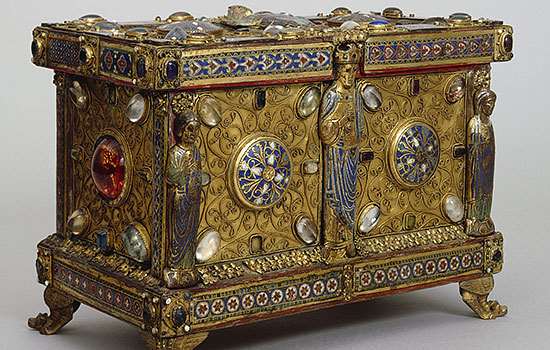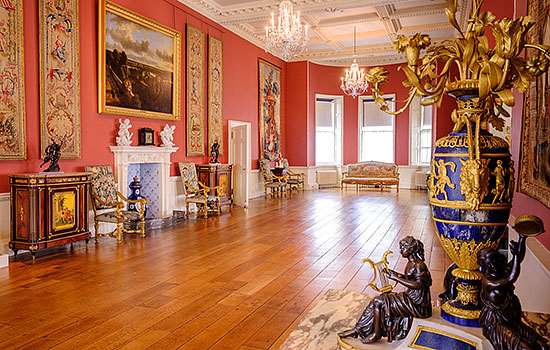Star Object
Earring
- Unknown maker
- 2nd century BC
- Gold
- Greece
Dating to the Hellenistic period (2nd century BC), this remarkable gold earring is the oldest object in the Wernher Collection. It depicts a nude Nike, the ancient Greek goddess of victory, whose wings are characteristically unfurled as she is depicted descending to earth from flight.
Hellenistic earrings of this type comprised a pendant figure dangling from a rosette disc on a U-shaped hook. The disc and hook once attached to this earring have been lost. Nike earrings were most popular from the late 4th to early 3rd century BC, making these a little more ‘modern’ than other examples.
Artists and makers
Rosette pendant jewel
- Unknown maker
- About 1630
- Gold, enamel, diamond and pearl
- France
Between 1620 and 1640, it was fashionable for well-to-do women to wear a single large jewel like this rosette on their bodice.
This one is exquisitely decorated with cosse de pois (‘peapod’) enamelling, characterised by its swirling botanical design. The style originated in France in the 1620s and was influenced by prints featuring highly stylised designs of flowers and plants.










